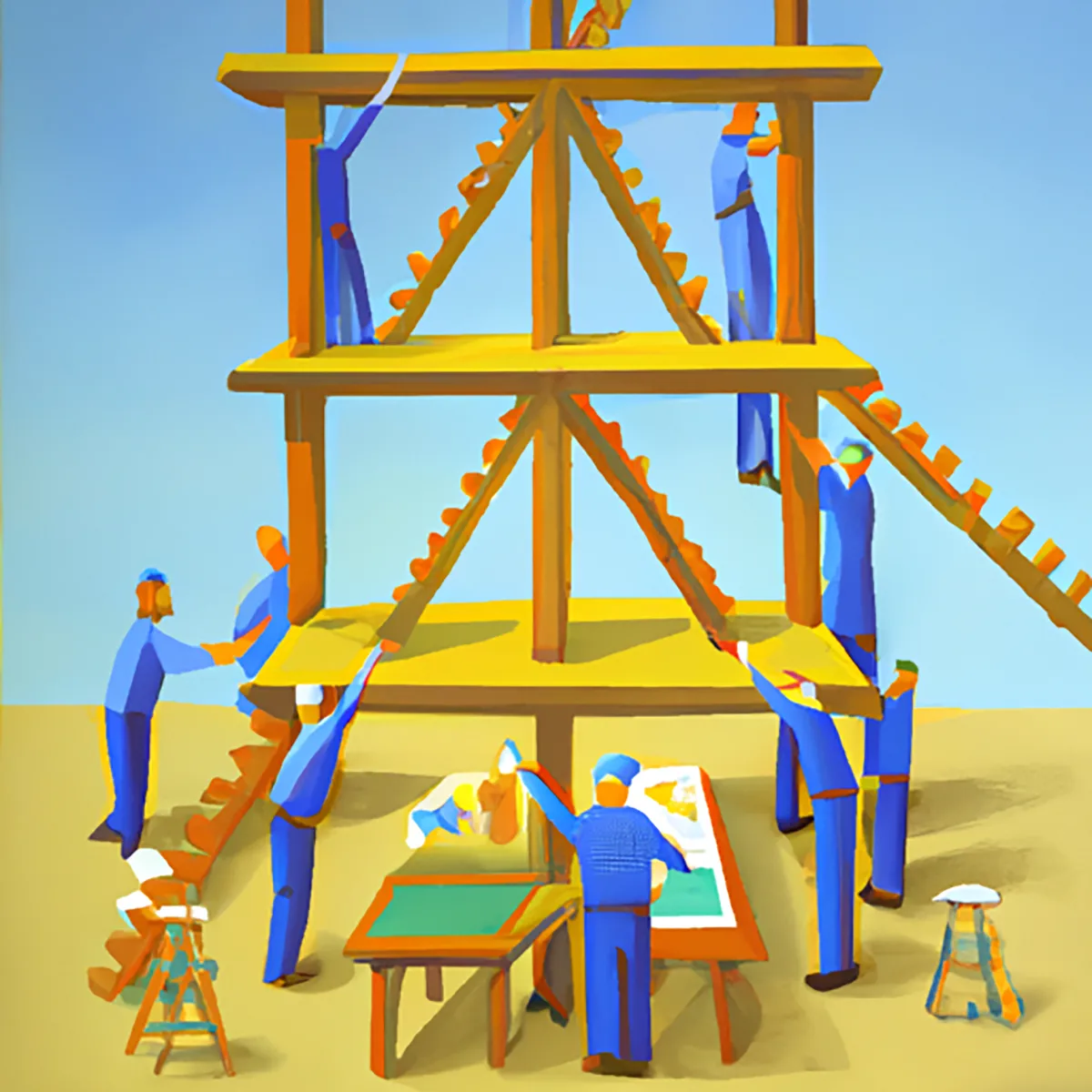Collaboration
Marshmallow Challenge
This team-building exercise requires teams to construct the tallest free-standing structure using 20 sticks of spaghetti, one meter of tape, one meter of string, and a marshmallow. It highlights the importance of group communication, leadership dynamics, collaboration, innovation, and problem-solving strategies. Additionally, it promotes a lean approach to risk management and emphasizes the value of continuous experimentation to minimize waste. This activity is ideal for teams who are new to agile methodologies.

Workshop steps
Assemble a marshmallow challenge kit for every team, comprising 20 spaghetti sticks, 1 meter of masking tape, 1 meter of string, and 1 marshmallow. Place these items in a paper lunch bag or envelope to ensure easy distribution and maintain the element of surprise. Divide the participants into teams of 3-6 members and have them sit around a table. Ensure all teams are working in the same area, in close proximity to one another.
Provide clear and concise instructions: Explain the goals and guidelines for the challenge. Construct the highest freestanding structure: The winning team will have the tallest structure, measured from the tabletop or floor to the marshmallow's top. The structure must not be suspended from any higher objects, such as chairs, ceilings, or chandeliers. Place the whole marshmallow on top: The entire marshmallow must be positioned at the structure's peak. Teams will be disqualified if they cut or consume any part of the marshmallow. Utilize the kit as needed: Teams can use any number of the 20 spaghetti sticks and any amount of string or tape provided. However, the paper bag or envelope cannot be incorporated into the structure. Modify the spaghetti, string, or tape: Teams are allowed to break the spaghetti or cut the string and tape to create new structures. Complete the challenge within 18 minutes: Teams must not touch or support the structure once the time is up. Disqualification will occur if anyone is found touching or supporting the structure at the end of the exercise. Ensure everyone comprehends the rules: Repeat the guidelines if needed and ask if anyone has any questions before beginning.
Begin the challenge by starting the countdown clock and playing music. Keep teams informed about the time: Announce the remaining time at 12 minutes, 9 minutes (halfway), 7 minutes, 5 minutes, 3 minutes, 2 minutes, 1 minute, 30 seconds, and a final 10-second countdown. Update everyone on the teams' progress: Share how each team is doing by announcing when a standing structure is built. Foster a friendly competition and motivate participants to observe others, while increasing the energy and stakes. Warn teams about disqualification for using holders: Remind teams that holding their structure for stability, especially when placing the marshmallow on top, will lead to disqualification. The winning structure must be stable on its own.
Once the timer stops, request everyone to take a seat for a clear view of the structures. Proceed to measure them, starting from the shortest to the tallest, while announcing their heights. Finally, determine and congratulate the victorious team.
Reflect on team performance: Gather your team and engage in a discussion about the group's process. Use the following questions to guide the reflection: Reflection questions to consider: 1. How well did we work as a team? 2. What was my role and contribution? Were there any tasks I avoided? If so, why? 3. Who emerged as the leader? How did their leadership manifest at different times? 4. What did I learn about myself, others, and group dynamics? 5. What insights can I apply to other situations? Summarize key takeaways from the challenge: Watch the Marshmallow Challenge TED Talk or mention its main points, such as: - Kindergarteners outperform business students due to their focus on innovation and prototyping. - Prototyping is crucial for success, as it allows for continuous improvement and adaptation. - The marshmallow symbolizes hidden project assumptions that must be identified and tested early on for effective innovation. - Embrace a lean approach to risk management and continuous experimentation, especially for teams new to agile methodologies. - Encourage creativity and collaboration within the team. - This exercise is particularly valuable for design and engineering teams and serves as a fun team-building activity.
Need help with this workshop?

